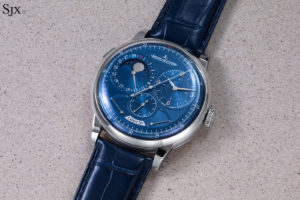
Earlier this year Jaeger-LeCoultre unveiled the refreshed Duometre line, with the entry into the new collection being the Duometre Quantieme Lunaire, the only steel model in the line-up so far. The dual train movement is used to power two separate sets of indications, one is the time with hours, minutes, and seconds, and the other a combination of the date, moon phase, and lightning seconds.
Made up of several models sporting an all-new look, this year’s Duometre collection is the first substantial facelift of the model line since its launch in 2007. While the original models had an aesthetic that brought to mind A. Lange & Söhne, the redesigned Duometre models have a more vintage-ish look that incorporates elements that are popular today, including a domed crystal and decorative recesses on the lugs. In terms of mechanical function, however, the new Duometre models are fundamentally the same.
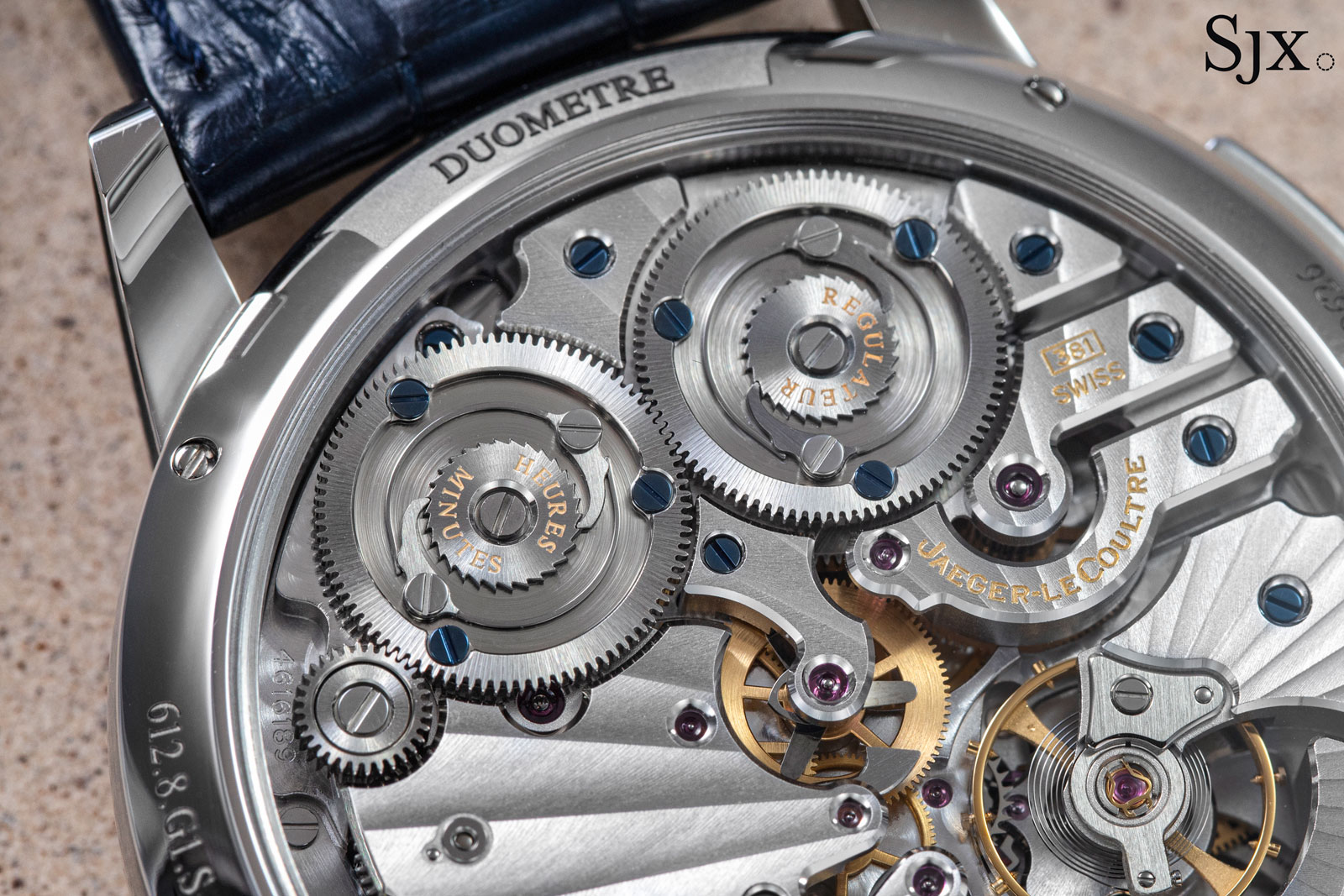
The “duo” barrels of the Duometre
Initial thoughts
The new look is a good one. It’s attractive and still fairly original; although it is vintage inspired, the design avoids looking generic, thanks in part to the distinctive Duometre dial layout. The domed crystal and dial result in the new model looking slightly bigger than the original, but at the same time it feels thinner.
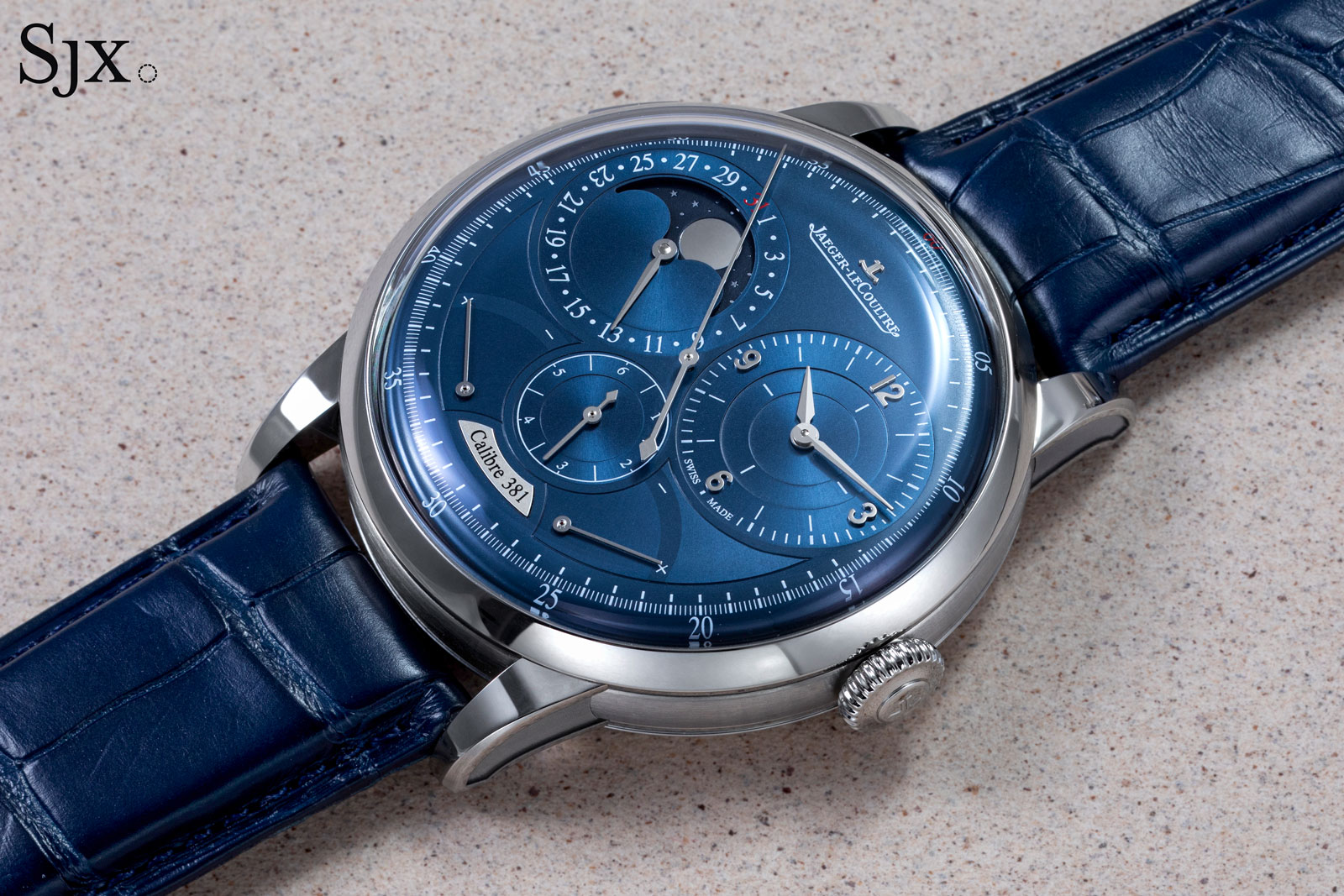
The dial layout is essentially the same as on the earlier generation Quantieme Lunaire as the movement is essentially identical. The recognisable double barrels-and-trains construction is evident, while the decoration of the industrial-haute horlogerie style that JLC does well.
As an aside, the combination of complications on the Quantieme Lunaire are less logical than on the Duometre Chronograph. Here one train takes care of the time, while the other powers the calendar, moon, and deadbeat seconds that together are exactly complementary or related thematically.
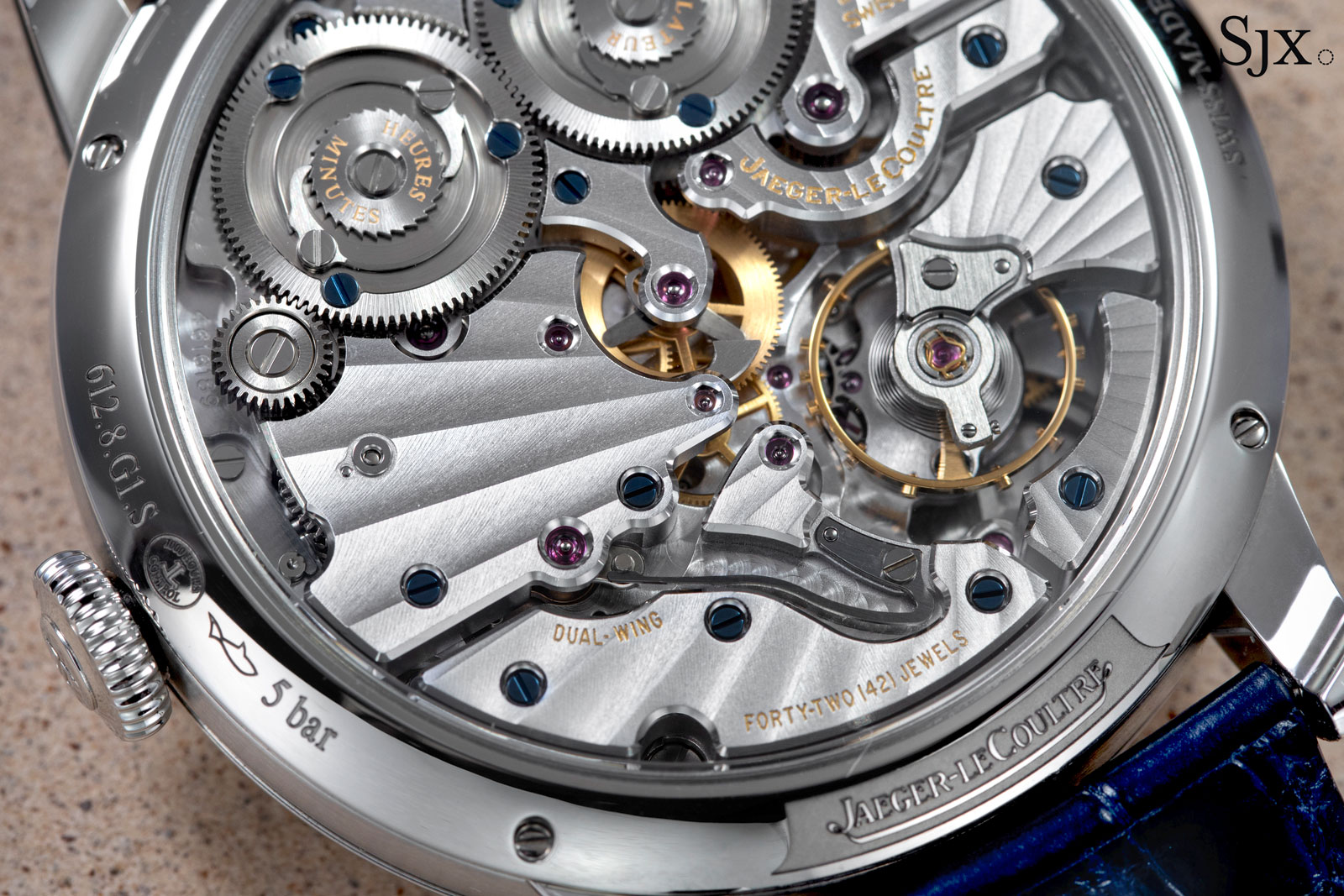
Functions aside, the new Duometre movements now use rhodium-plated brass instead of German silver for the bridges and plates. Some enthusiasts might miss the patina that develops on German silver bridges over time, though I am indifferent since the material is not synonymous with JLC, unlike say, for Lange.
The switch is not a substantive change in terms of cost, but probably done to simplify the materials inventory at JLC. While German silver is harder to machine, brass is more expensive to process due to the plating and careful handling after plating.
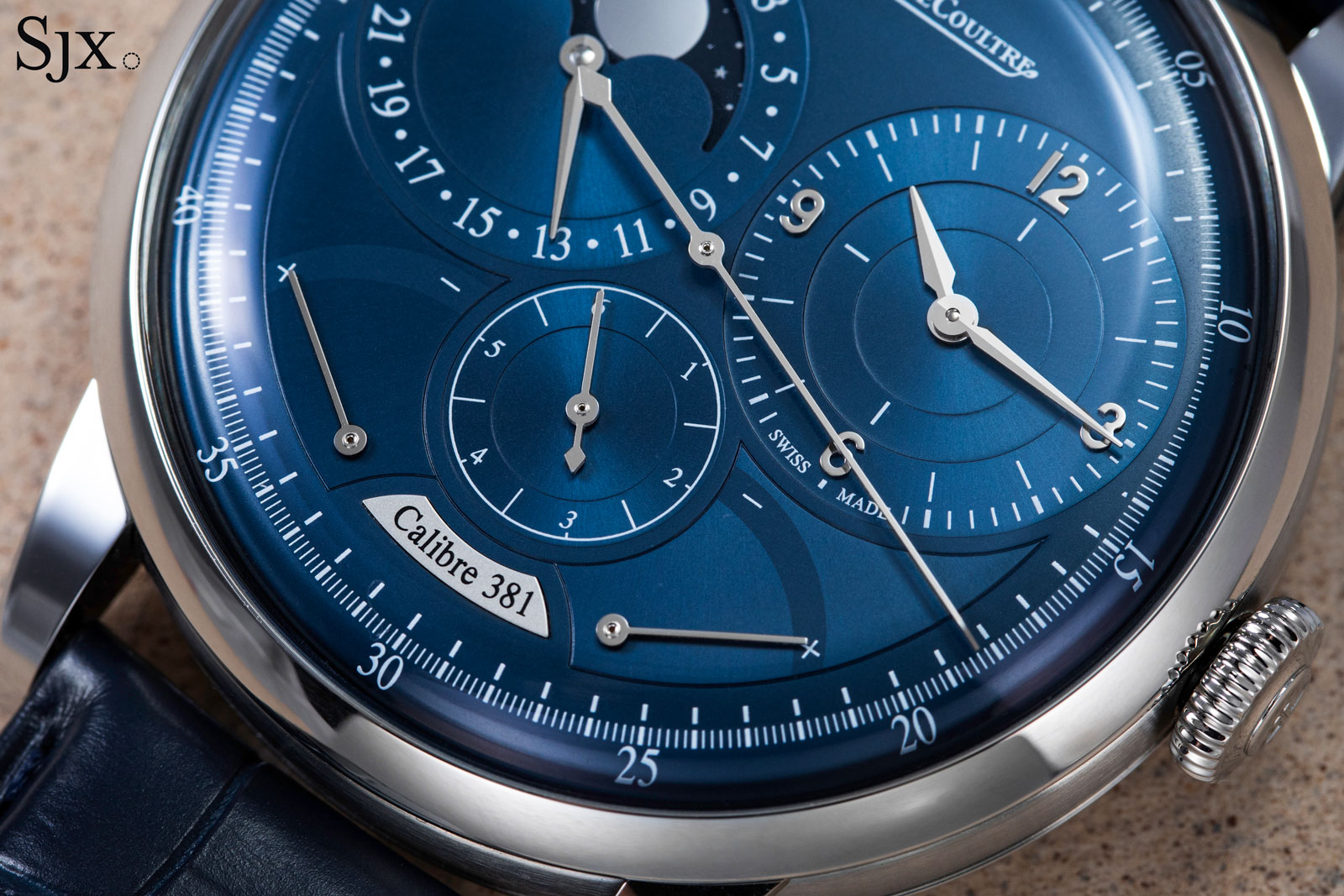
The Duometre Quantieme Lunaire is executed well inside and out. The quality and construction is as expected from a manufacturing-oriented brand like JLC. The US$44,100 price tag, however, feels higher than it should be for JLC, which was historically value-oriented in its pricing.
Even though the Quantieme Lunaire has several complications, they are mostly simple functions. Its most complex feature is arguably the double-train construction that is complex due to the additional parts within a limited space.
More generally, the facelifted Duometre line feels like a missed opportunity for JLC. Lange retained the familiar design of its Zeitwerk but installed a new generation of movements, while Audemars Piguet rolled out the Code 11.59 line that was maligned, but is mostly powered by a new family of calibres. After 20 years, a significant new Duometre calibre is overdue, particularly since JLC sells itself as a manufacture.
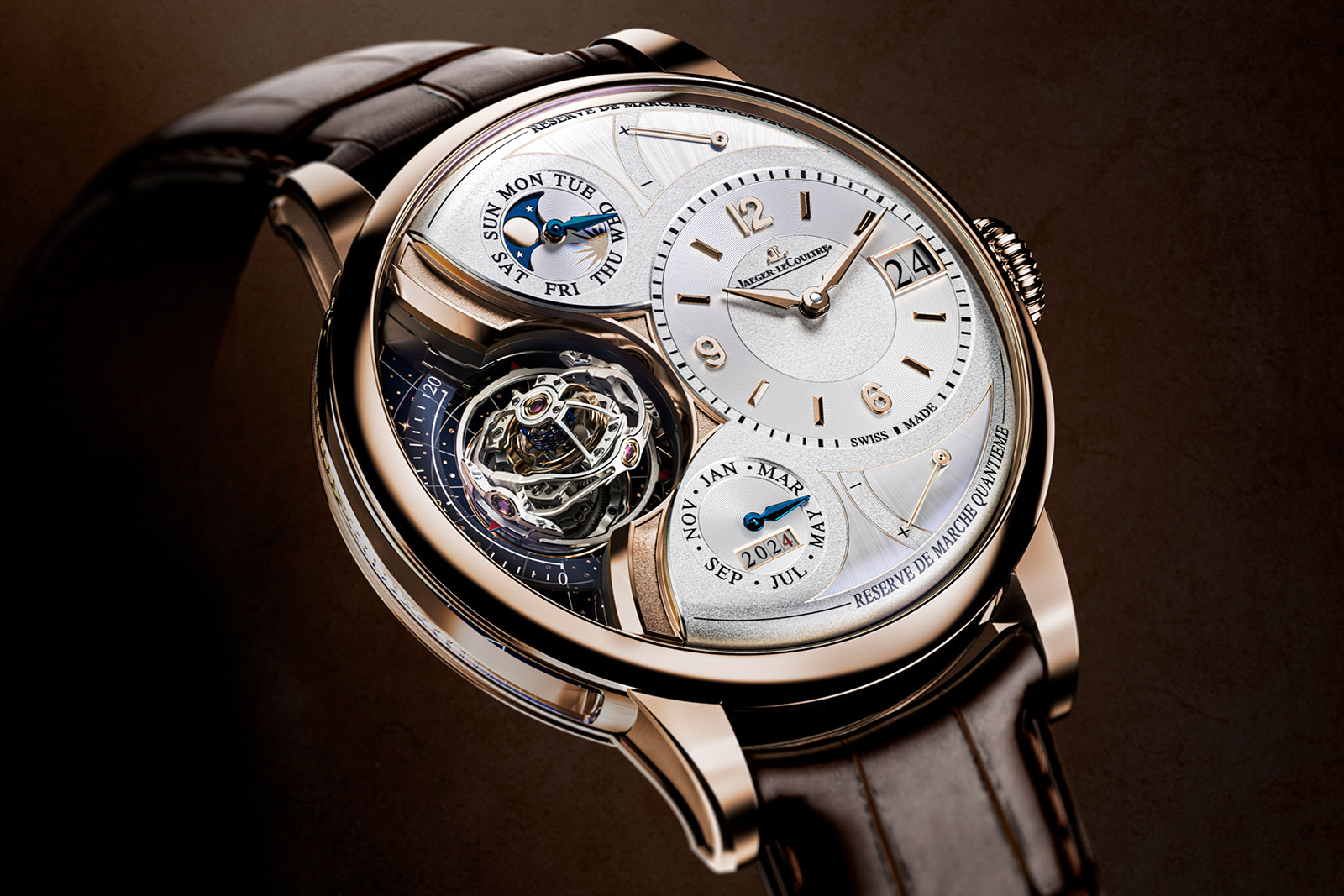
The flagship model of the new Duometre line, the Duometre Heliotourbillon Perpetual that is actually Spherotourbillon-meets-Gyrotourbillon. Image – JLC
Dual trains
The new case is new for the Duometre, but actually takes its cues from the Master Grande Tradition, with the lugs and flanks sharing a similar style.
Being less complicated than the Master Grande Tradition models, the Duometre arguably works better with this case style as the result is slimmer and more elegant. The narrow case middle also makes the new Duometre feel thinner than its predecessor, though it isn’t much changed in terms of measurements.
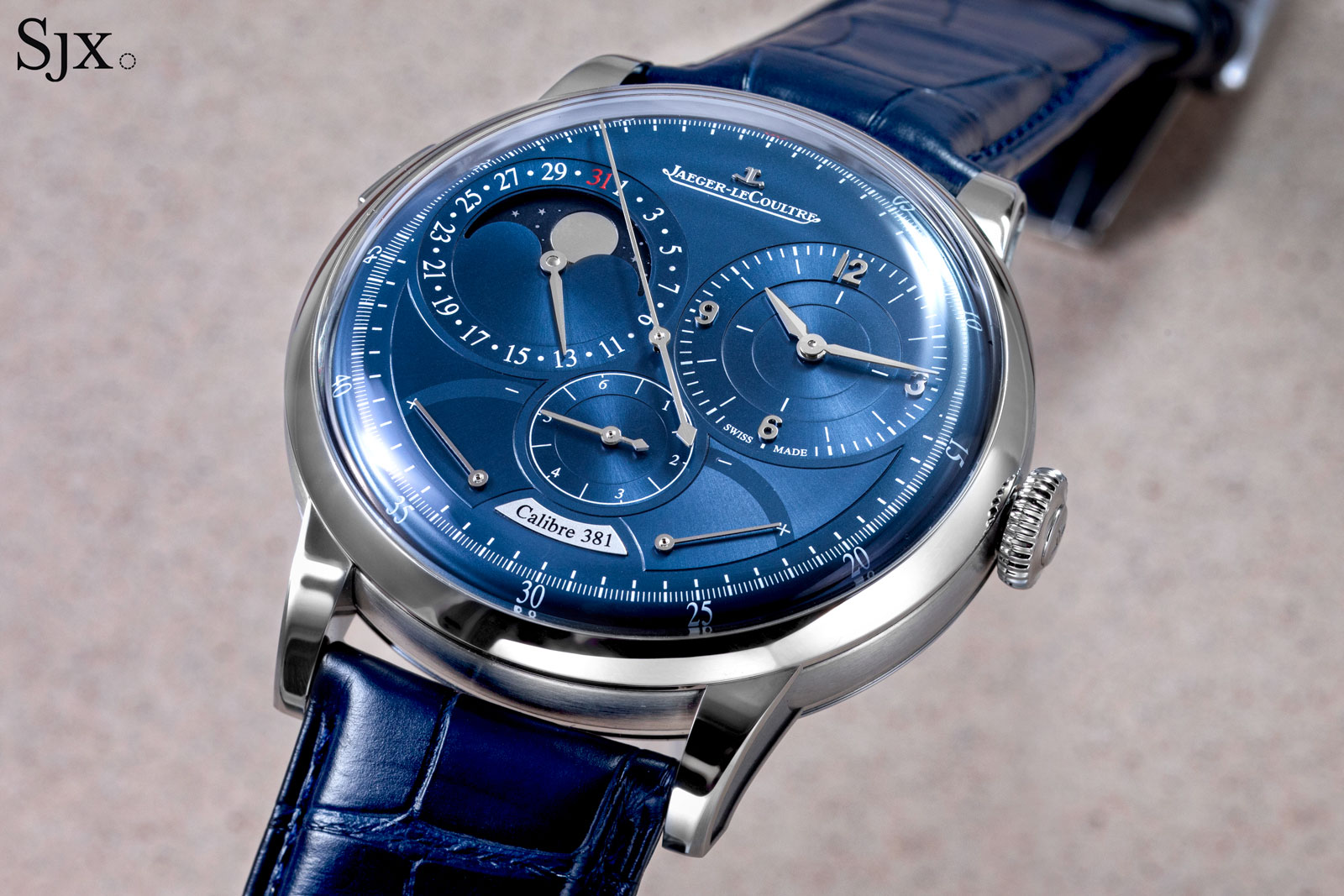
The case flanks are slightly convex, while the lugs (that are separate pieces secured to the case) have frosted flanks with a raised border. This raised border is presumably meant to each the lines of the bezel and back, but feels unnecessary, especially since the finishing is not a refined as that on the Patek Philippe ref. 6301P (which admittedly costs 25 times a much).
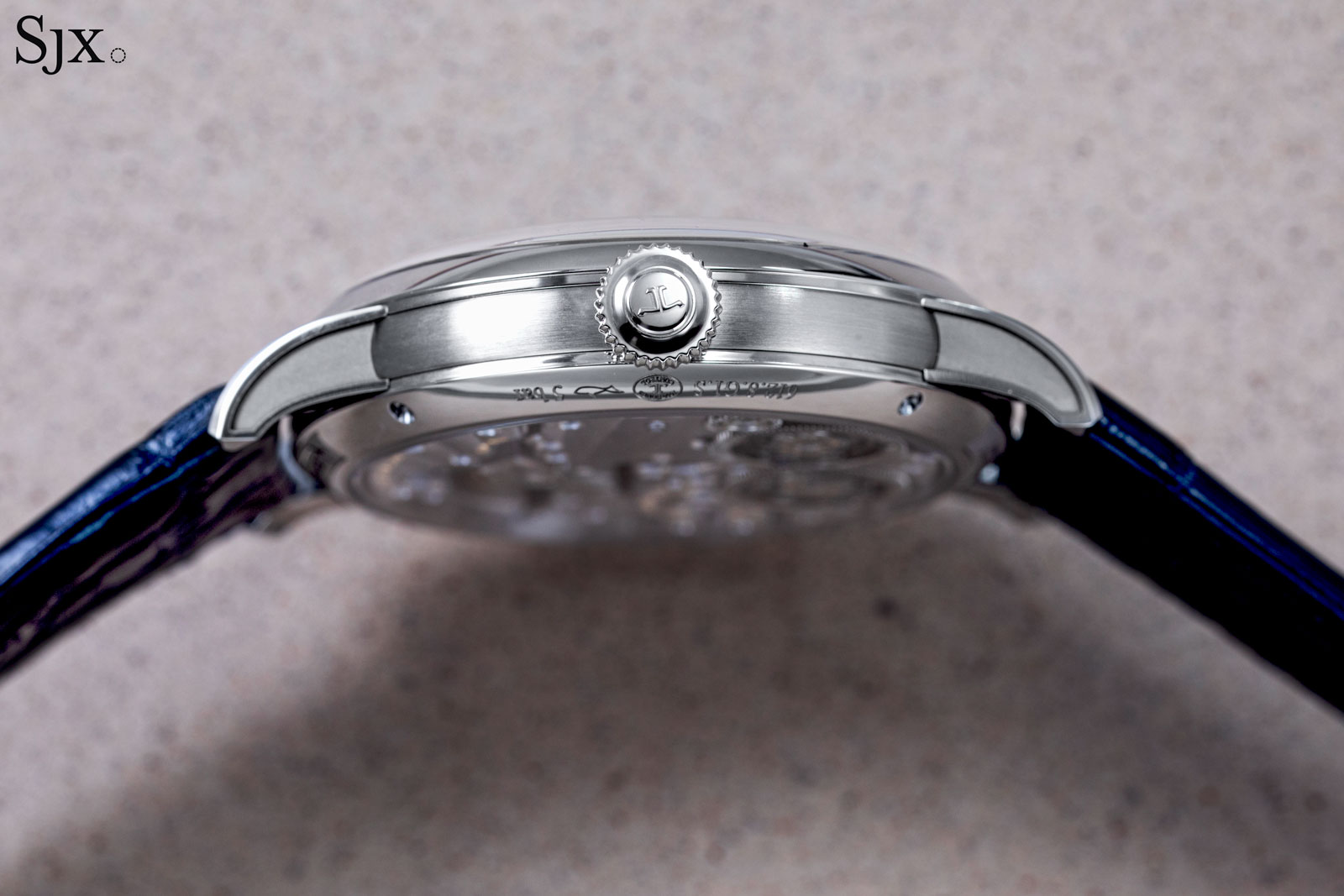
The case middle is surprisingly narrow for a relatively thick watch that’s over 13 mm high. A good part of the thickness is taken up by the domed bezel and back, which helps camouflage the thickness somewhat.
The curved of the domed bezel continues into the domed crystal, which in turn sits on a domed dial. Both the domed crystal and dial give the watch a slightly vintage feel, which works with the overall aesthetic, but isn’t particularly novel give the popularity of retro-style design now.
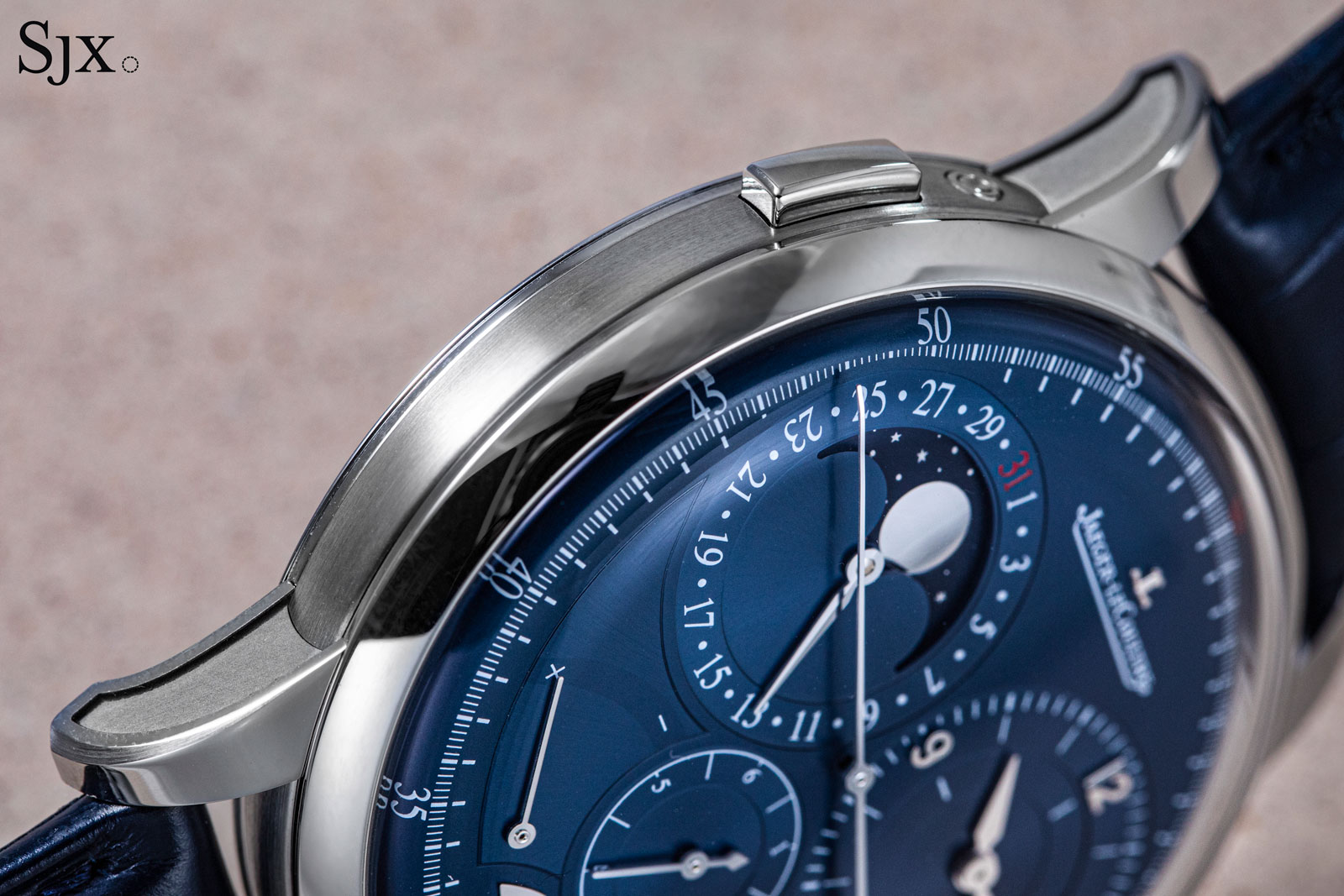
Though the domed form of the dial is new for the Duometre, the layout and design are essentially the same. Various tweaks have been made, for instance widening the chapter rings, but the dial is still recognisable.
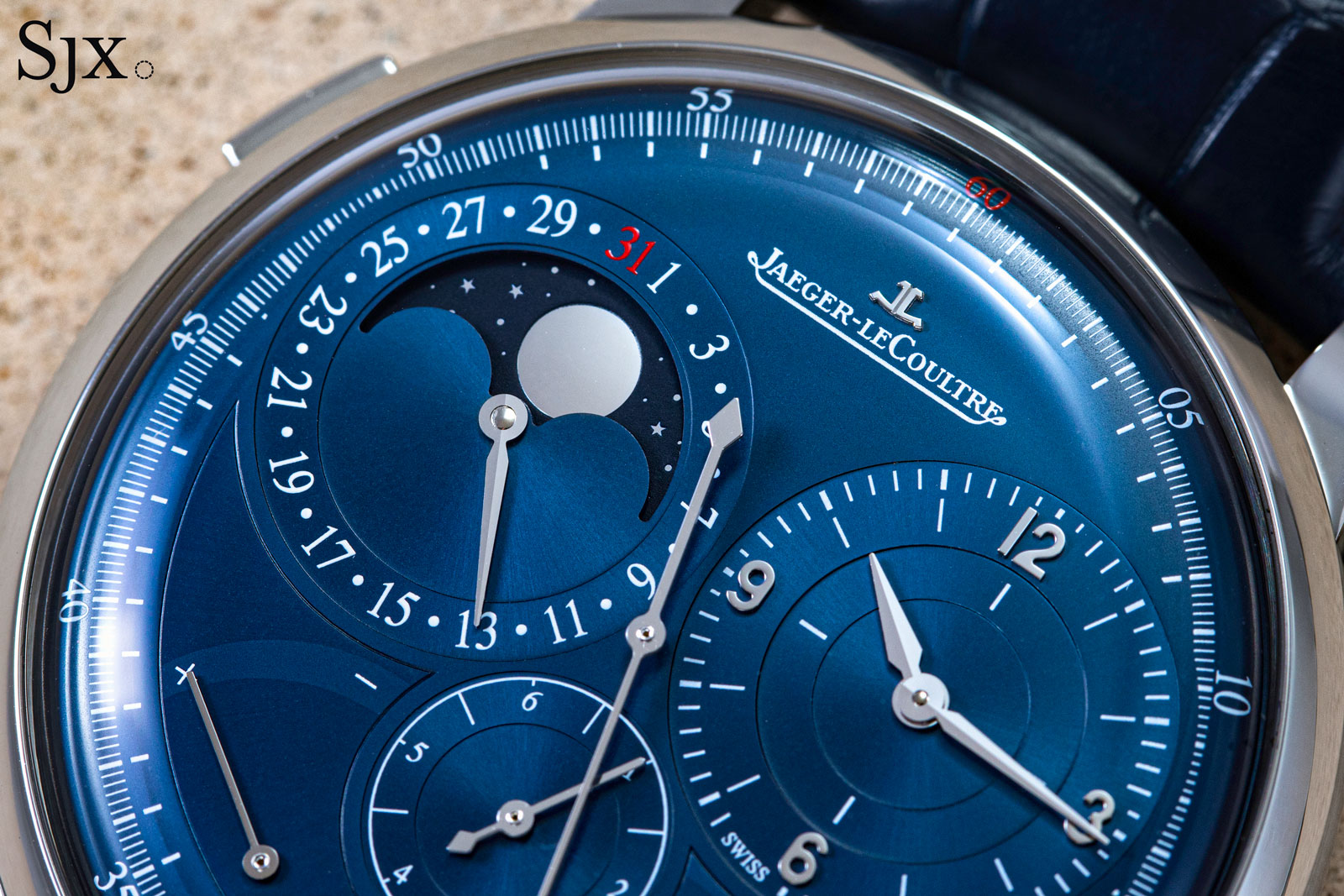
A good choice on the part of the designers was to leave out the apertures for the power reserve indicators that were present on some variants of the first generation. These aperture revealed the racks that drive the power reserve hand, but felt like an add-on to answer a question no one asked. (This year’s Duometre Chronograph Moon has the apertures unfortunately.)
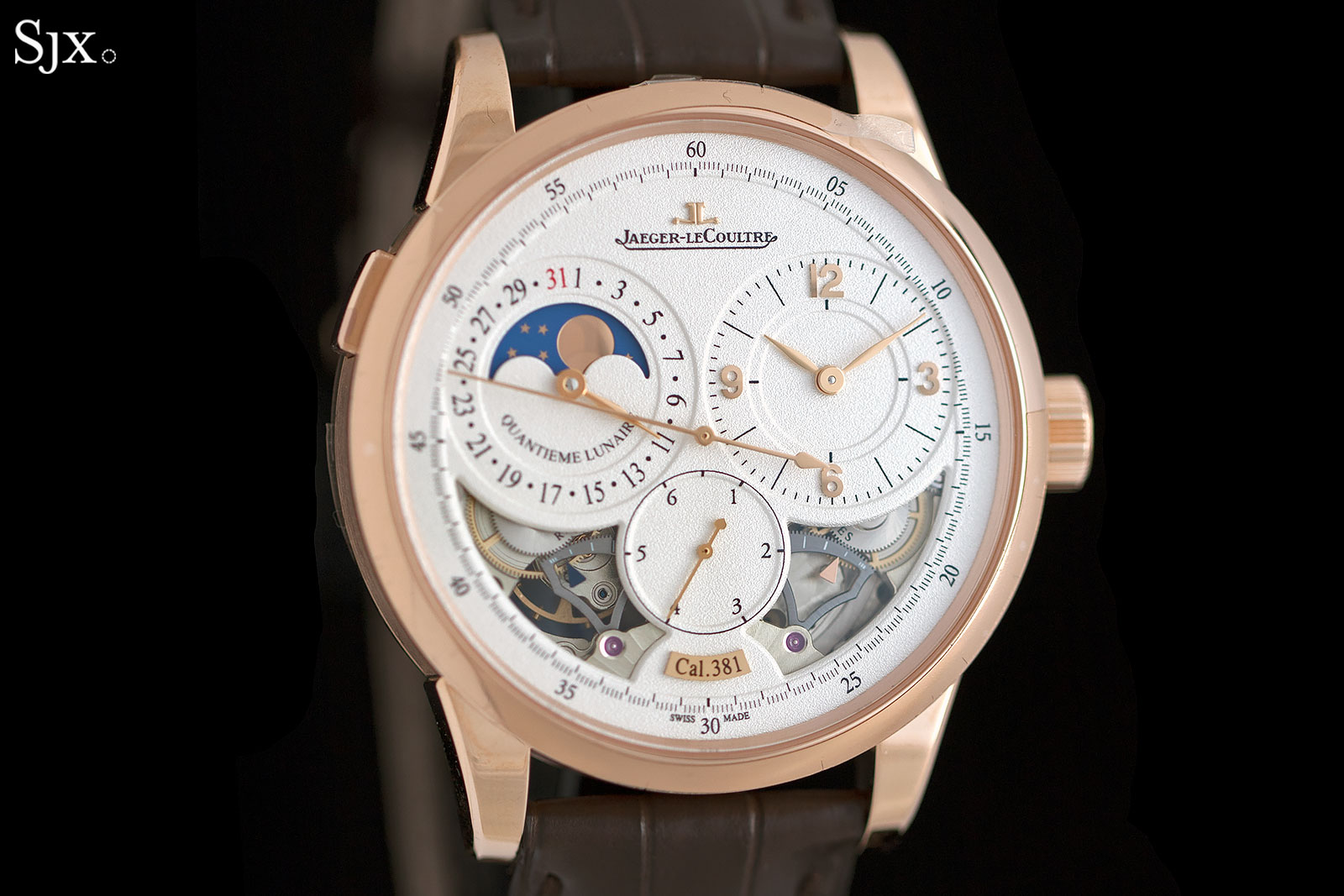
The first generation Duometre a Quantieme Lunaire 42 mm ref. Q604242J
The dial is an attractive metallic blue that manages a subtle two-tone effect thanks to a different surface finishing. The main dial has a satin finish, while each of the indicators is radially brushed, but with different graining to suit each scale.
Unlike the earlier generation dial that was one piece and stamped, this is comprised of multiple pieces that are slotted together. The result is a dial with depth since the layers are apparent, but it also leaves the borders between the segments visible.
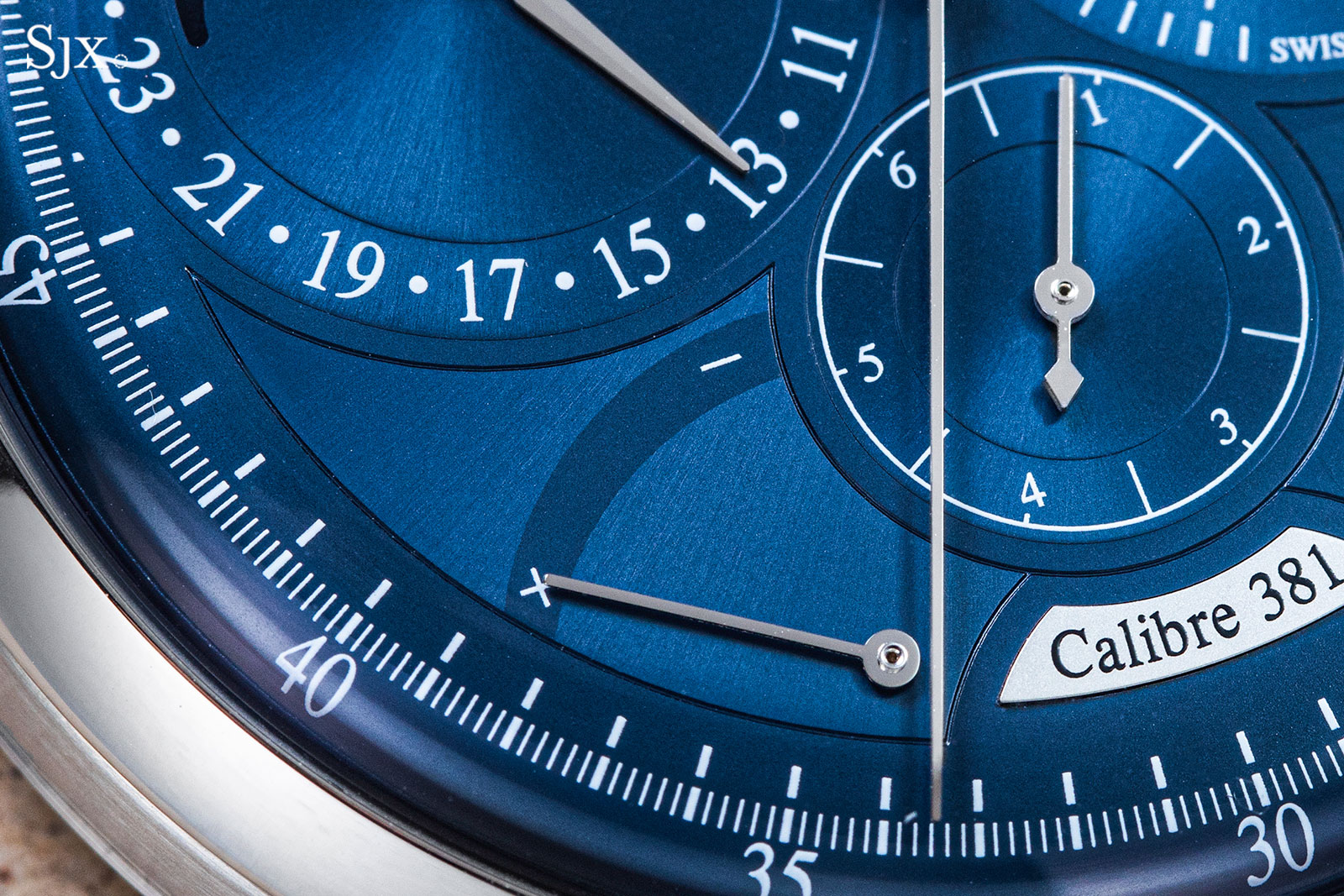
The movement inside retains the same calibre number as in the first generation as it is inherently unchanged. Even though the cal. 381 is the most basic of Duometre movements, it looks appealingly complicated with its double barrels, multiple bridges and radial Côtes de Genève.
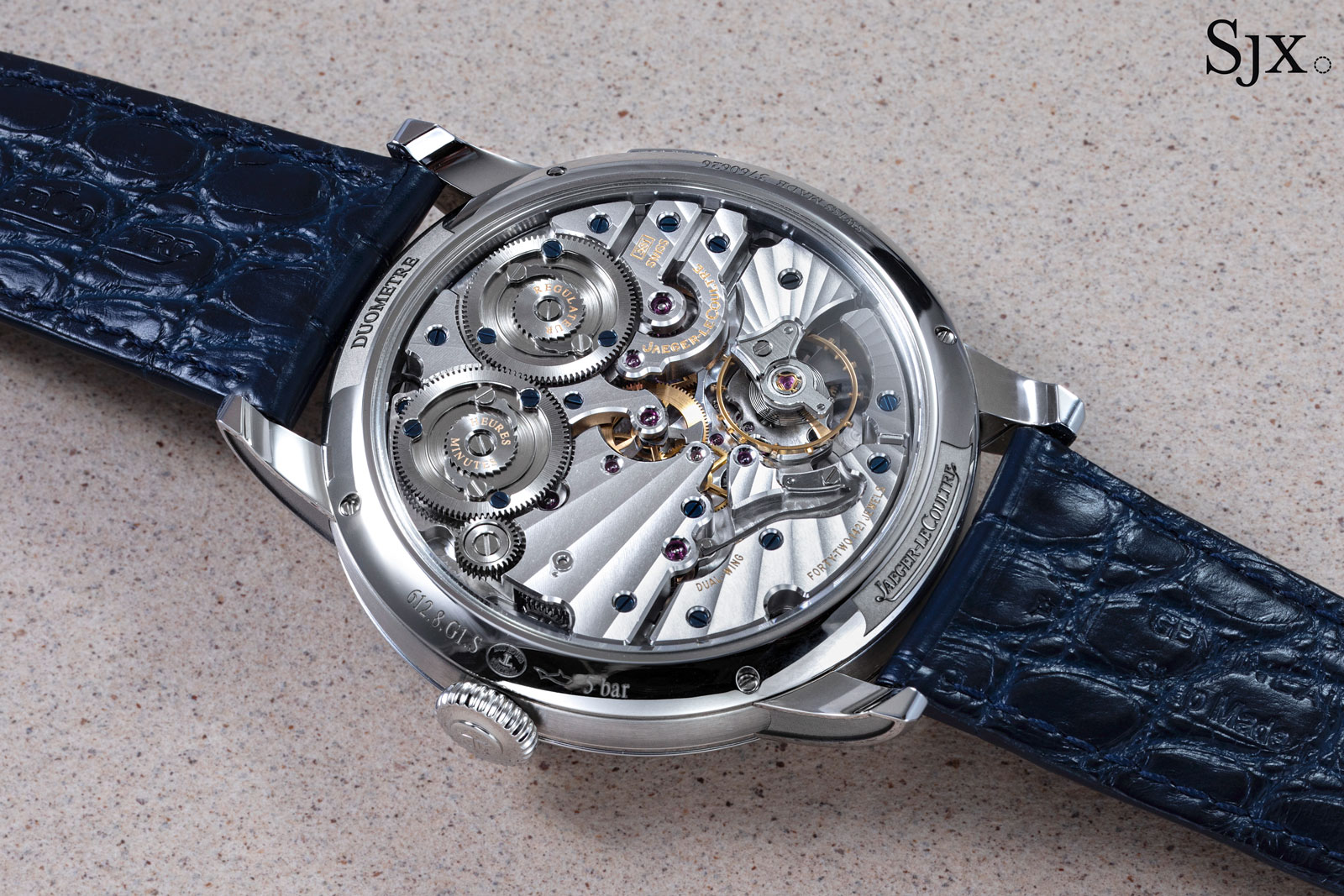
The construction of the movement is easily observable: the right barrel powers the timekeeping portion of the movement that ends with the balance wheel at the lower right.
On the left, the second barrel drives the date, moon phase, and lighting seconds hand that makes one revolution every second, stopping six times for a 1/6th of a second measurement, at least in theory. The movement layout is mirrored on the dial, with each barrel’s set of indications occupying the respective half of the dial.
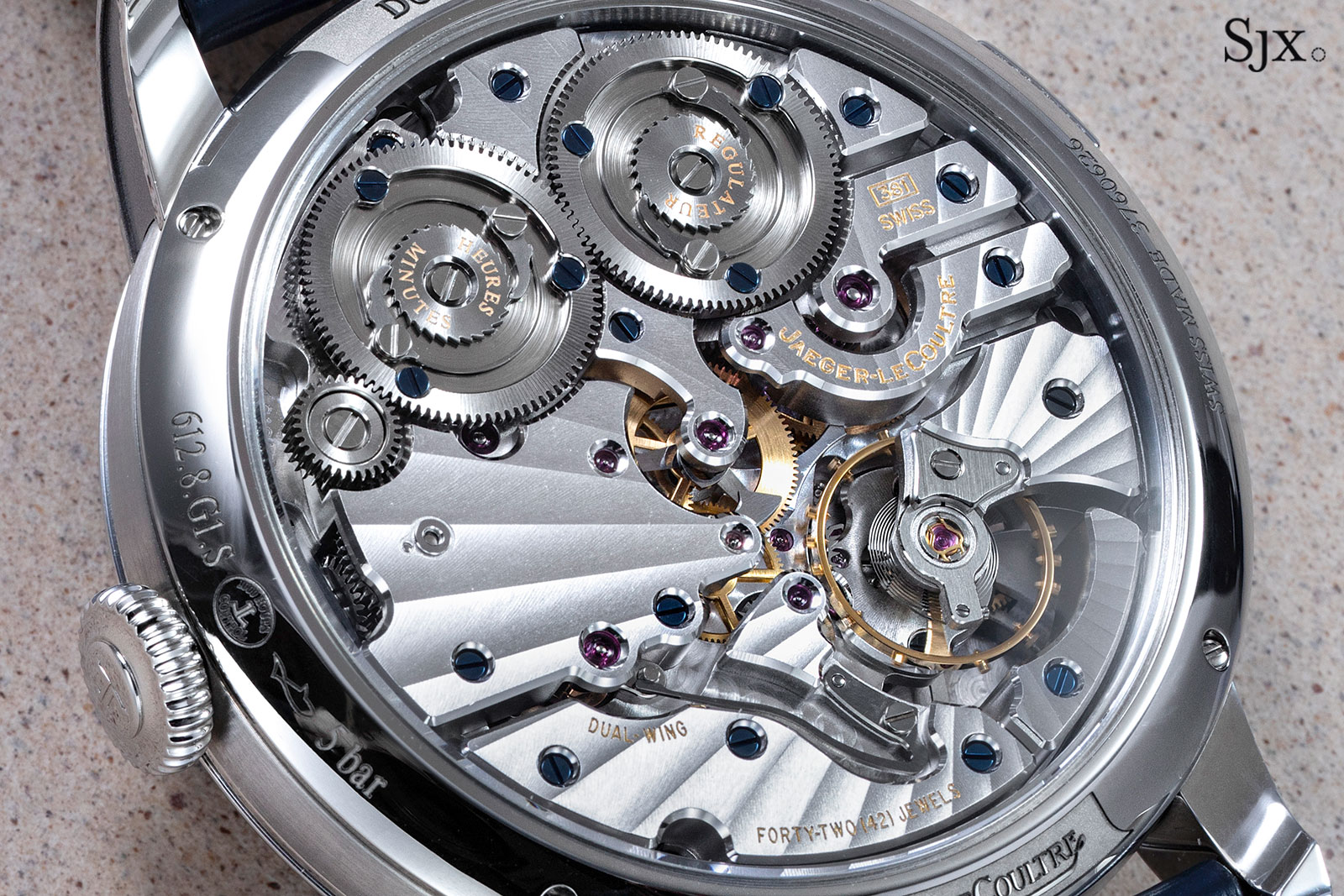
The rationale behind this approach is simple: adding a barrel specifically to power the complications allows the balance to have its own dedicated mainspring, which in theory improves chronometry since the energy supply is stable and uninterrupted. The downside is a smaller balance wheel, but that’s a discussion for another day.
The double-train construction means a substantial number of parts are required, despite the relatively straightforward complications. According to JLC, the cal. 381 is made up of 414 parts, or about double the number of a conventional movement with a single train and the same functions.
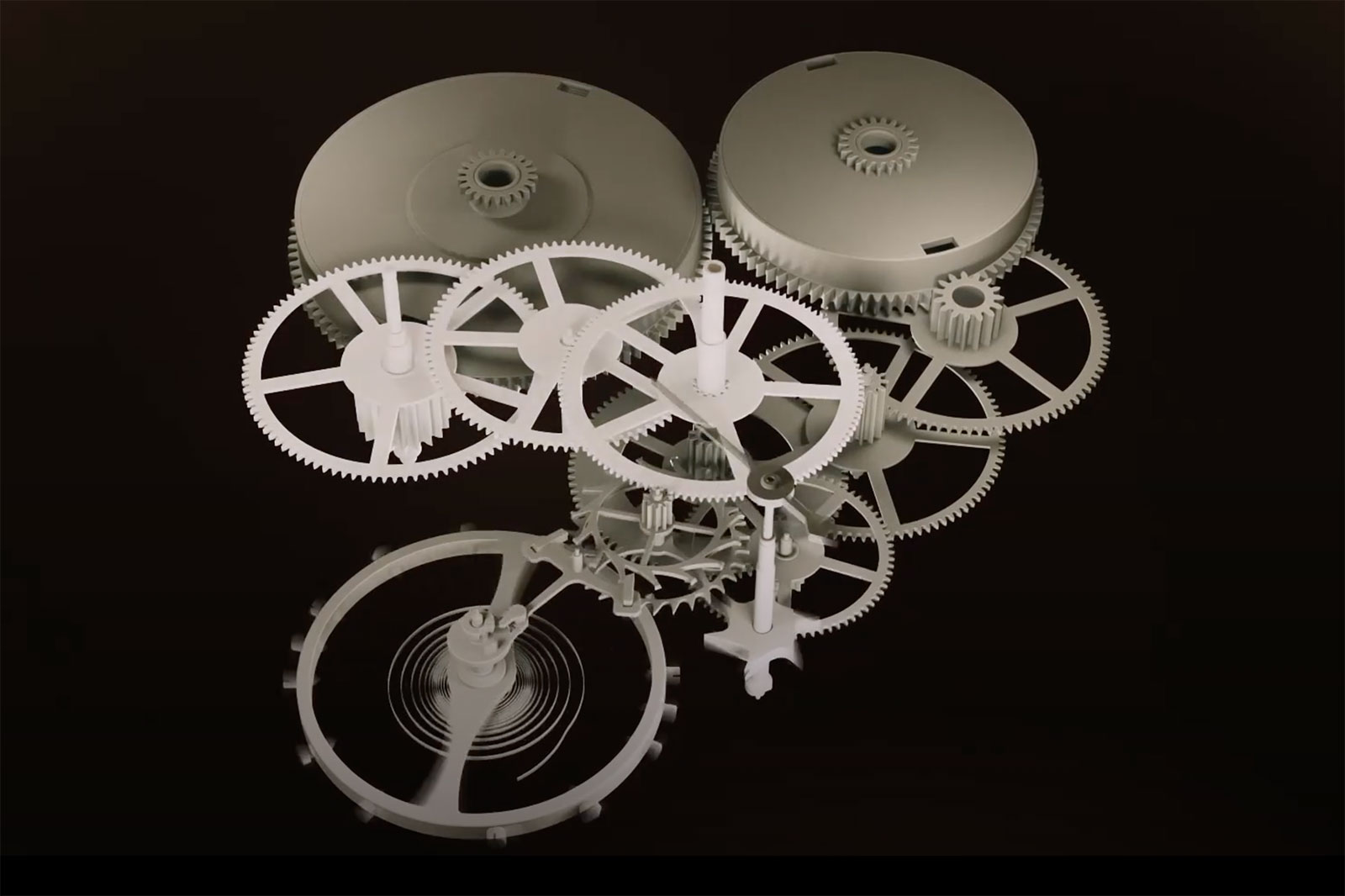
The dual trains of the Duometre movement, with a larger barrel for timekeeping and its gear train in white. Image – JLC
As a result, the movement appears quite dense (though the lower left quadrant is empty as this does without the chronograph), with multiple small bridges that reveal the moving parts below.
It also incorporates esoteric mechanical details that made the Duometre appealing from the start. Most notably amongst these are the grande sonnerie-style winding clicks integrated into the tops of both barrels. Though small, the balance wheel with screws is another old school detail.
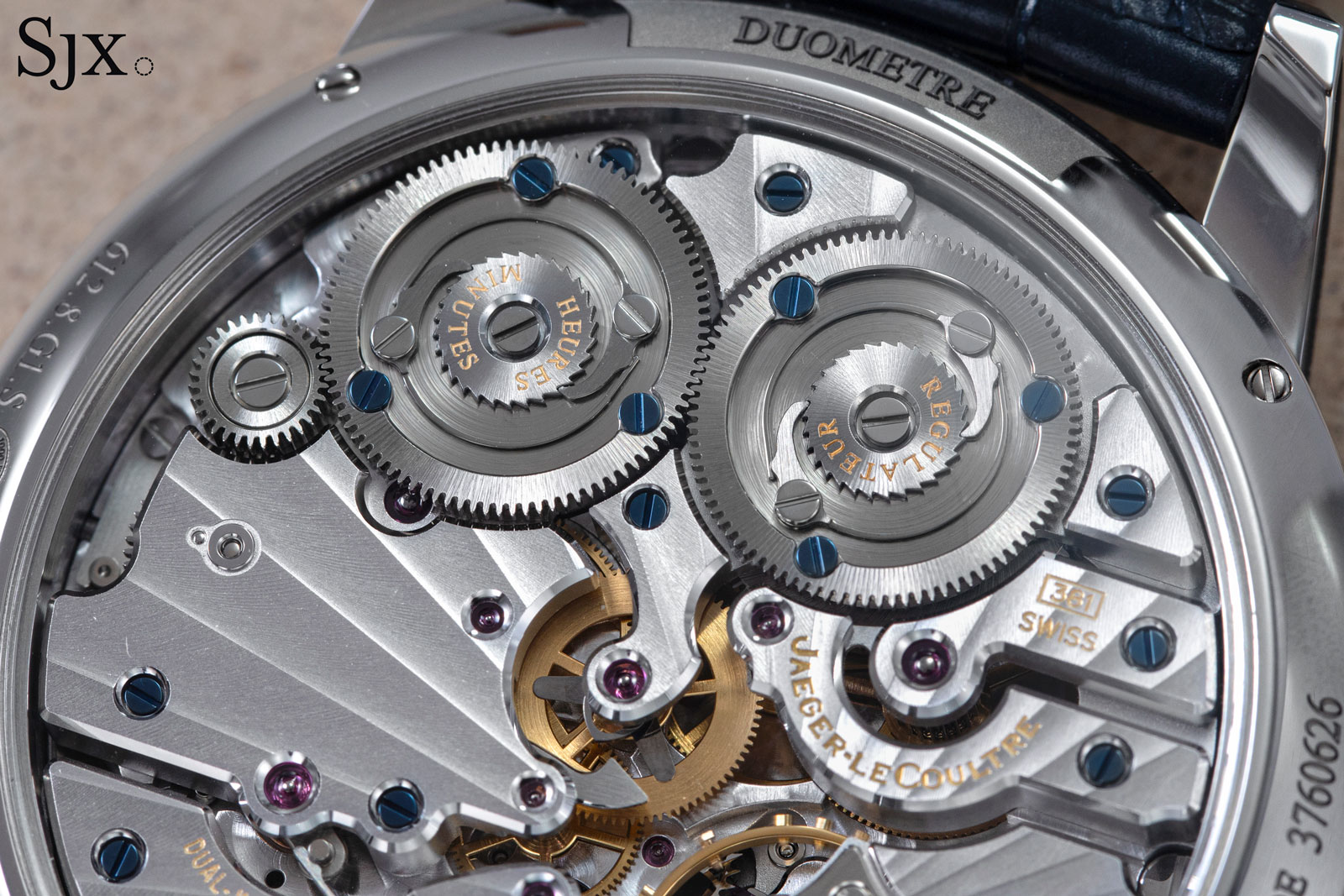
The twin barrels, each with a pair of integrated winding clicks
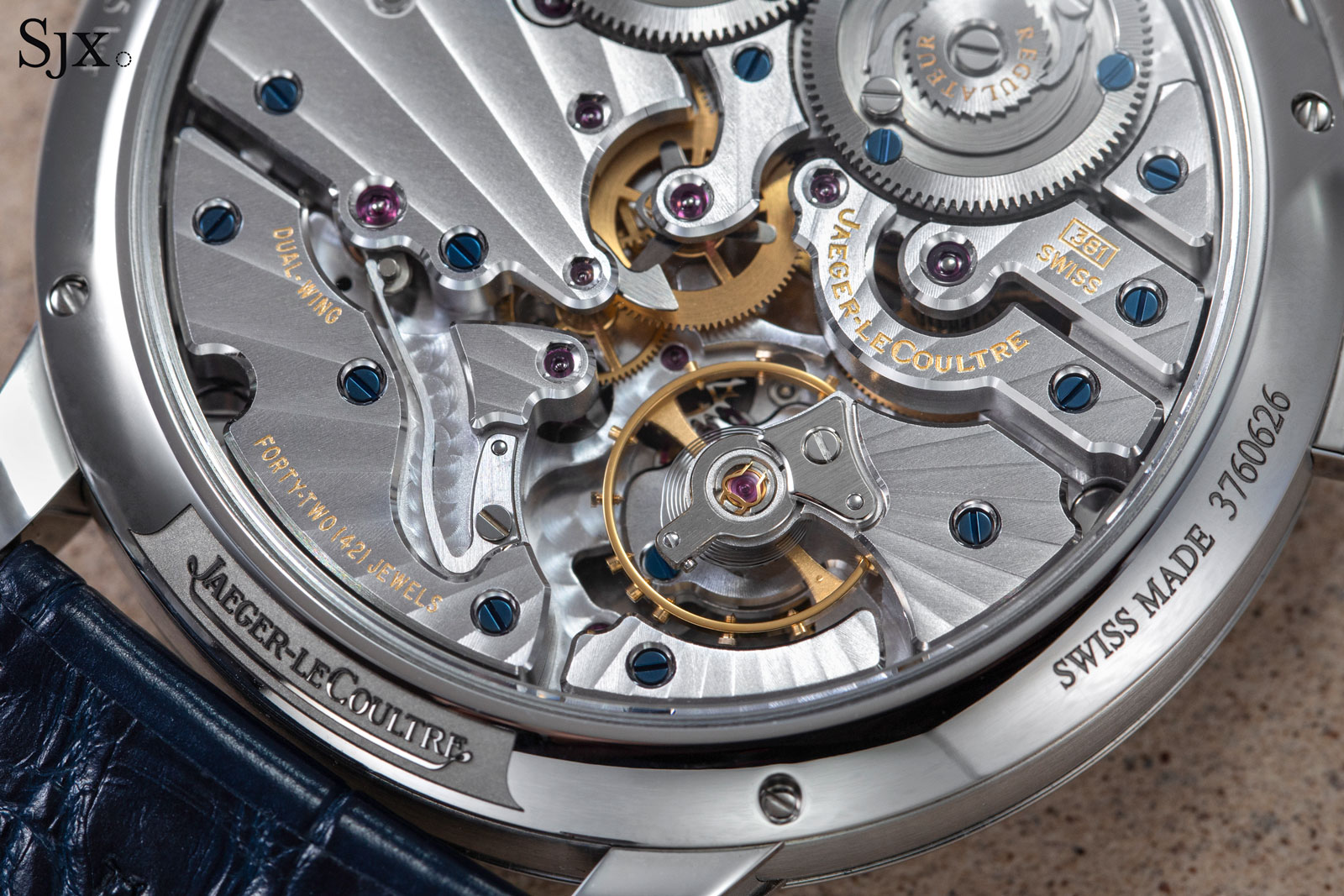
The balance is necessarily small as the timekeeping portion of the movement can only occupy half the volume
While the layout of the movement remains the same, the appearance is subtly different with the rhodium-plated brass bridges. The plating gives the cal. 381 a brighter silvery finish that is permanent.
In contrast, the German silver bridges of the earlier generation begins with a more subdued tone that oxidises to gain a yellow tint over time. Because of its association with upscale brands like Lange, German silver has a certain cachet, and it also has some excellent mechanical properties, like a slight edge in hardness over brass.
While German silver is harder to machine, brass requires additional treatment by way of plating, so in practice neither is more valuable than the other. Rhodium-plated brass probably makes raw materials management and processing easier at the factory, since the Duometre movements are now consistent with the rest of the line-up.
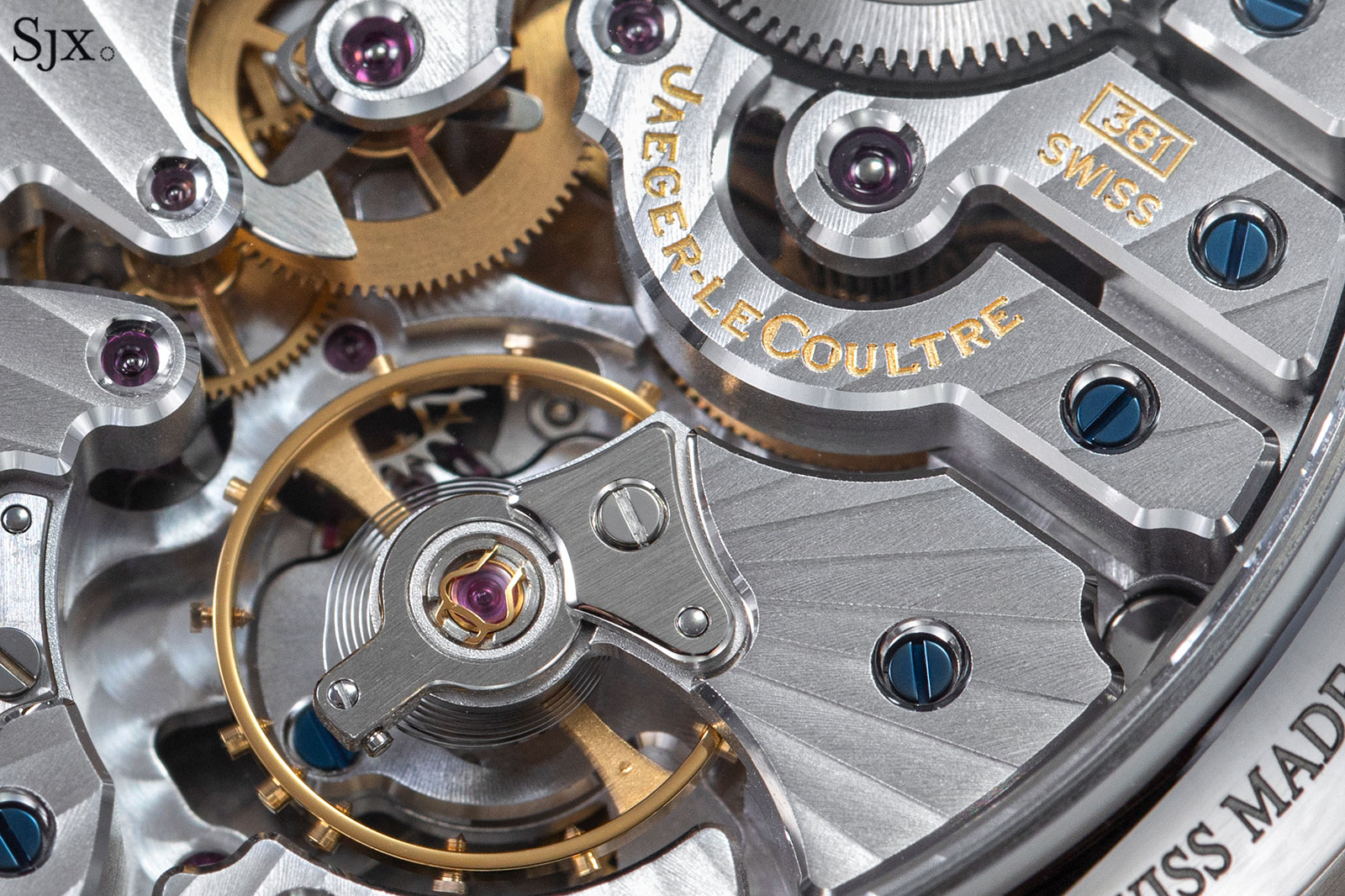
The cal. 381 retains the same decoration as before, but now in tandem with the rhodium plating. The finishing is still thorough and excellent, reflecting the industrial haute horlogerie approach that blends mechanical decor with hand finishing.
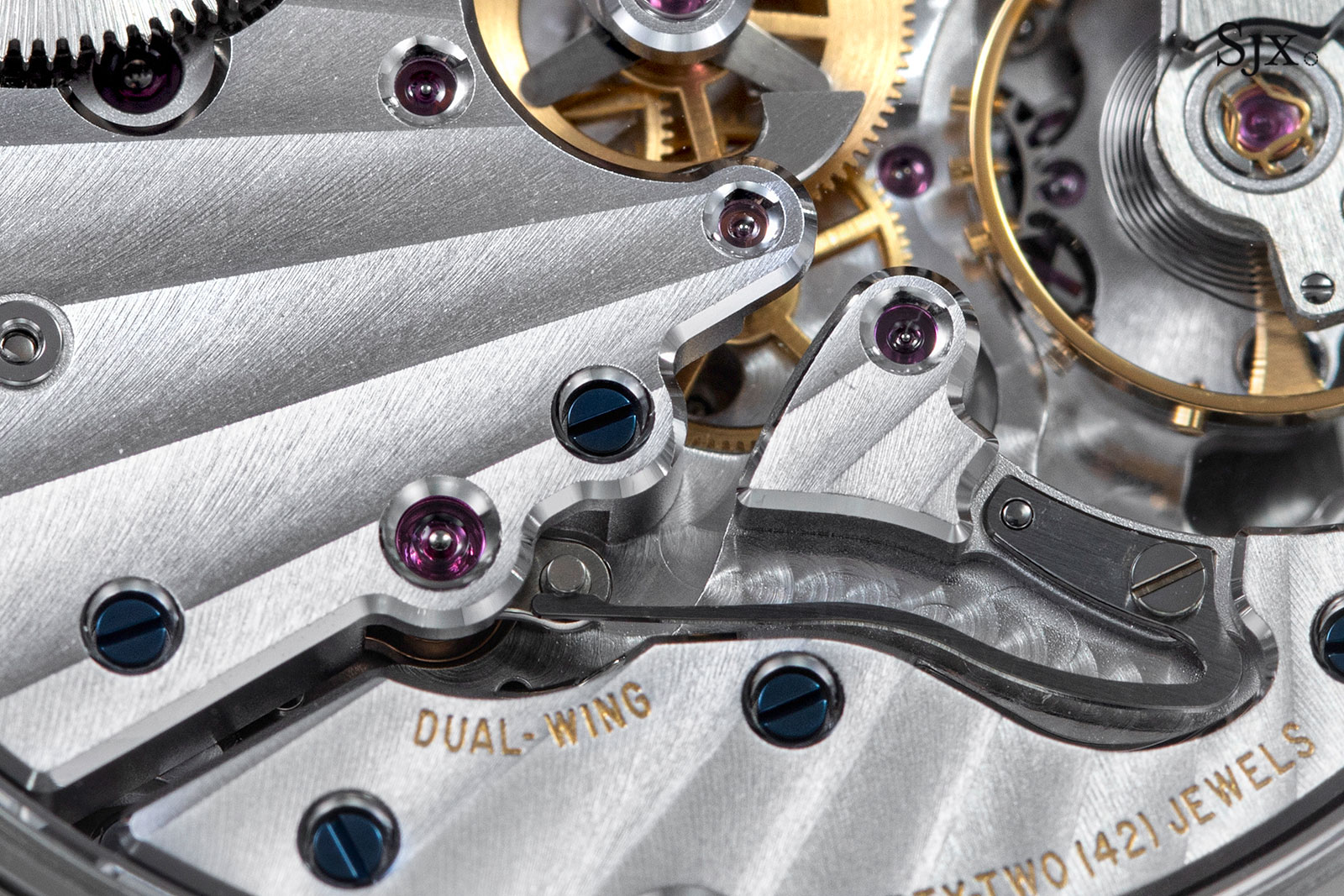
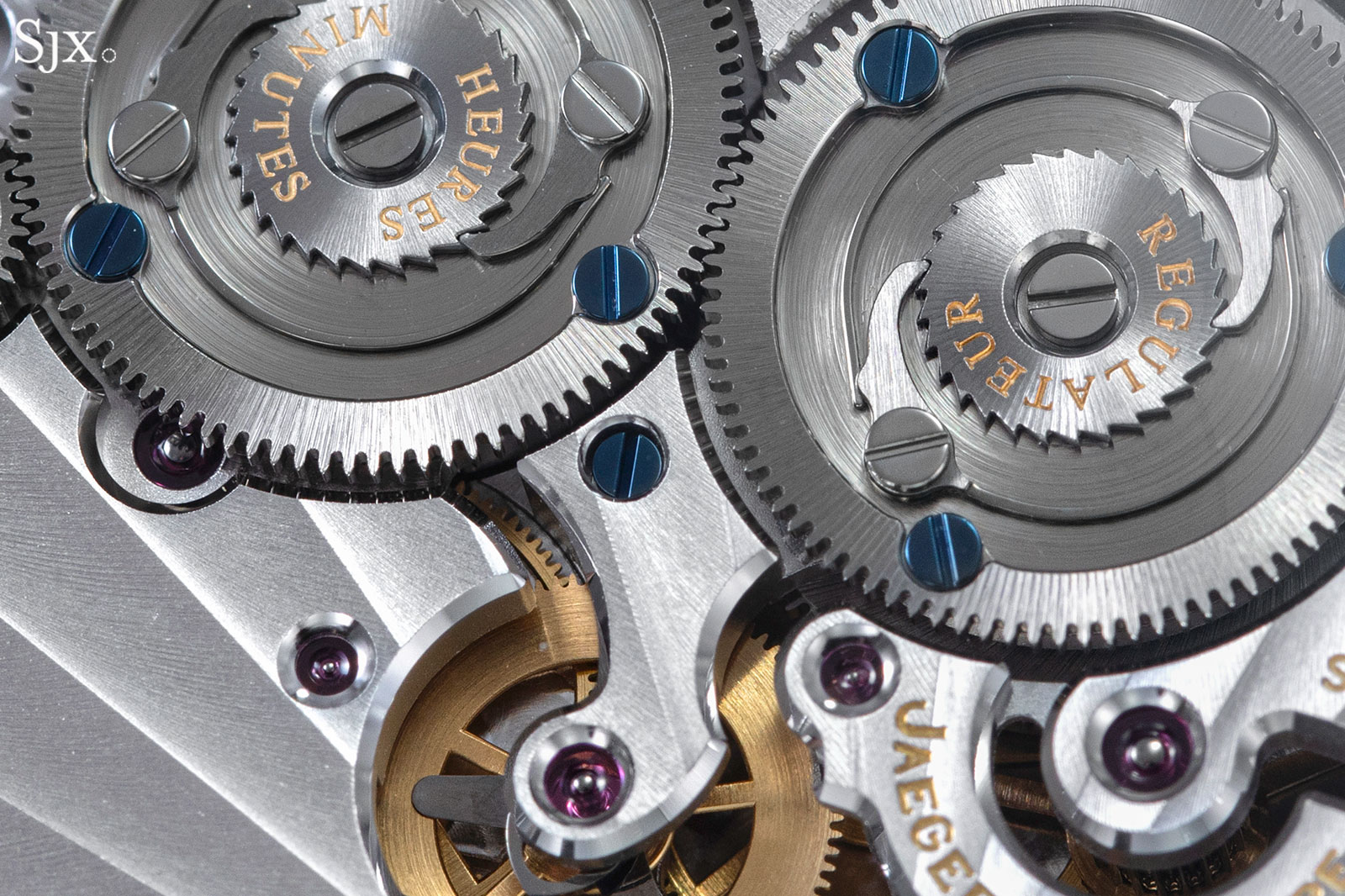
Continuing the point made earlier, the cal. 381 is still good looking and finishing well, but more should have been done to make it different. Ideally, a reconstruction to make the calibre more novel in technical terms, or even refining the decoration to take it a notch higher.
Key facts and price
Jaeger-LeCoultre Duometre Quantieme Lunaire
Ref. Q604848J
Diameter: 42.5 mm
Height: 13.05 mm
Material: Steel
Crystal: Sapphire
Water resistance: 50 m
Movement: Cal. 381
Functions: Hours, minutes, and seconds, lighting seconds, date, moon phase, and double power reserve indicators
Winding: Manual wind
Frequency: 21,600 beats per hour (3 Hz)
Power reserve: 50 hours
Strap: Blue alligator with folding buckle
Limited edition: No
Availability: Now at Jaeger-LeCoultre boutiques and retailers
Price: US$44,100
For more, visit Jaeger-lecoultre.com.







